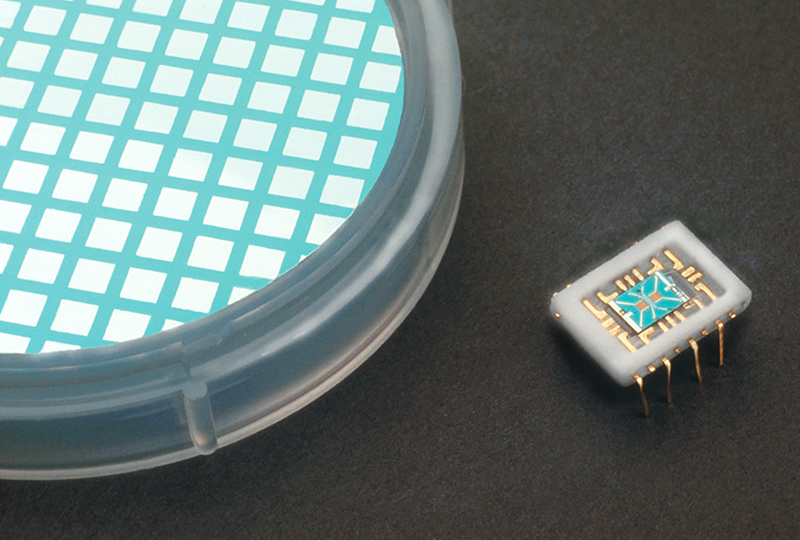
A Leak Monitor for Industry
In space flight operations, hydrogen leaks pose significant operational and safety problems. In systems that use hydrogen propellants, such as NASA's Space Shuttle, the location and severity of a leak must be determined in a timely manner; failure to do so may breed consequences that range from program delays to loss of life and equipment.
In 1990, leaks on the launch pad necessitated grounding of the Space Shuttle fleet until the leak sources could be identified, a process that was costly both in monetary terms and in disruption of Shuttle schedules. The incident triggered an intensive government/industry/academic effort to develop a comprehensive leak monitoring system for space launch vehicles. And, since industry experienced similar leak detection difficulties, the effort was expanded to a double-barreled approach that additionally embraced development of a commercial automated gas leak system for industrial applications.
The latter system-the Model HG2000 Automated Gas Leak Detection System manufactured by GenCorp Aerojet Industrial Products-made its debut in 1995 at the St. Thomas, Ontario assembly plant of Ford Motor Company, where Ford is producing autos that operate on natural gas in response to the air quality requirements of the 1990 Clean Air Act amendments.
Other objectives of the program, including a system for improving NASA's leak detection capabilities for operation of current and future spacelaunch vehicles, were similarly accomplished. The development of advanced leak sensors and the automated monitoring system won a 1995 R&D 100 Award, presented annually to the 100 most significant technological advances of the year.
At the time the development effort was launched, no commercial system existed for detecting hydrogen leaks at low concentrations in inert (oxygen free) environments with high sensitivity. There were hydrogen sensors available, but they had serious deficiencies when used in applications that demanded operation in inert environments. To address both matters simultaneously-the sensor and the complete system-the development program progressed along two parallel fronts.
NASA's Lewis Research Center, in cooperation with Case Western Reserve University (CWRU), Cleveland, Ohio, undertook development of advanced point contact hydrogen sensors. An evaluation of sensor technology led to a decision to use a palladium-silver solid state sensor that did not require an oxygen atmosphere to detect hydrogen leaks and could identify concentrations as low as one part in a million. The sensor was to be fabricated on a silicon wafer in a structure that would allow high sensitivity to changes in hydrogen concentrations, and it had to be miniaturized, or "microfabricated," to minimize power consumption and allow placement of sensors in a wide variety of locations. Although the concept of such a sensor had been investigated, it had never been fully developed as a complete microfabricated package.
The other part of the two-pronged development effort was conducted by Marshall Space Flight Center and GenCorp Aerojet Industrial Products, Las Vegas, Nevada. Their job was to develop a complete microprocessor-based hardware/software system to monitor multiple microfabricated hydrogen sensors and visually display the source and magnitude of hydrogen leaks in real time.
Success on both fronts led to accomplishment, in 1994-95, of multiple objectives: a significant advancement of sensor technology; a system for NASA use in leak-checking the Space Shuttle propulsion system; a prototype Aerojet/Marshall system for leak detection in Reusable Launch Vehicles now being developed; and the first commercial application of the system, used in Ford Motor Company production of the 1996 natural gas-powered Crown Victoria auto.
In development tests of the vehicle, which is fueled by compressed natural gas stored at 3,000 pounds per square inch pressure, Ford employed conventional pressure decay and soap bubble techniques that can take hours to determine that leakage is below the acceptable limit (2.5 cubic centimeters per hour). That clearly wouldn't do for production line leak checking. Ford wanted a system that could test all critical joints and provide a leak reading in less than 15 minutes. Additionally, Ford required that its production line system work with nonoxygen-containing gas; make leak measurements 10 times lower than the acceptable rate; provide simultaneous detection at eight locations; and be able to measure leaks during system pressurization. Tests of the Aerojet system showed that it was the only system capable of meeting Ford's specifications.
The NASA/CWRU/Aerojet team is continuing to work on improving the system. CWRU and Lewis Research Center are focusing on increasing the detectable hydrogen concentration range of the sensor in order to broaden the range of useful applications. Aerojet and Marshall are similarly working to improve the complete system and Aerojet is exploring possibilities for additional commercial applications, among them safety monitoring of hydrogen facilities, such as chemical plants and refineries, and monitoring of hydrogen buildup in nuclear waste depositories.

A natural gas-powered Ford Crown Victoria is being checked for hydrogen leaks.

A NASA/industry team developed a hydrogen sensor that fits on a wafer chip.













